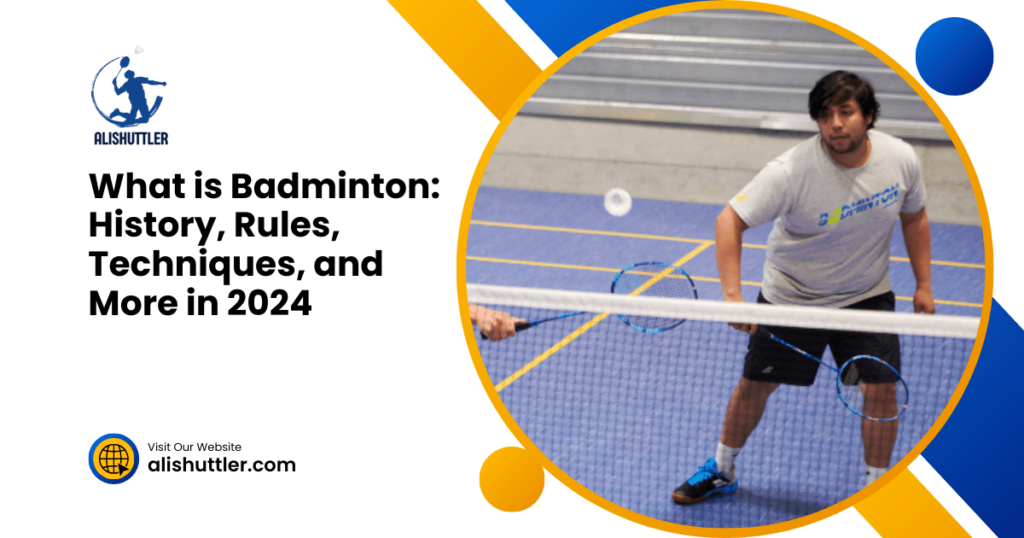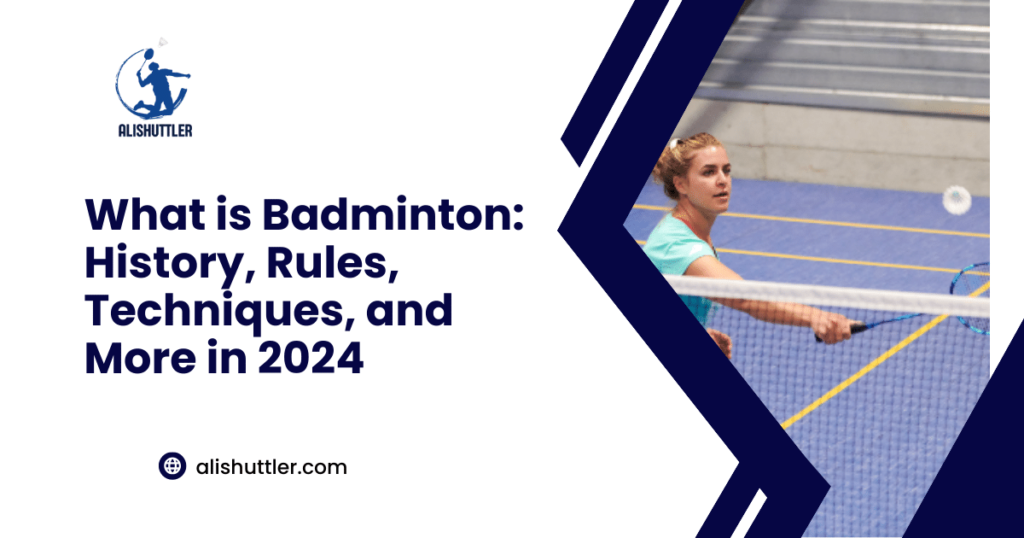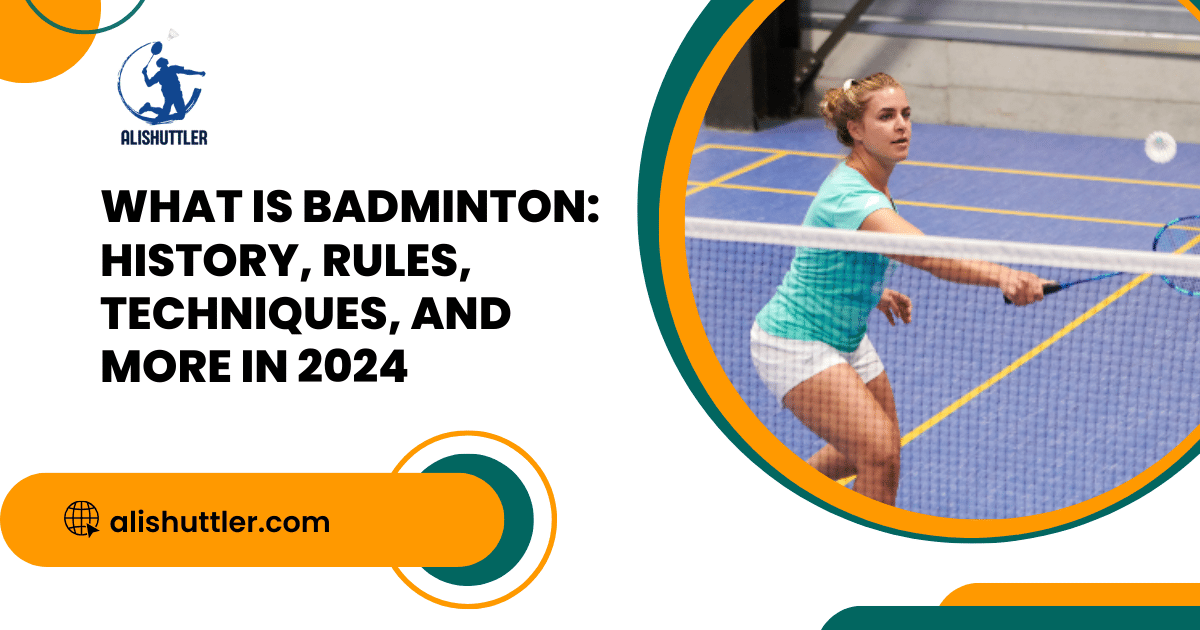Surprisingly, badminton is the fastest racquet sport globally, with shuttlecocks traveling at speeds up to 200 mph. As a passionate player myself, I understand the thrill of smashing that birdie across the net. The game requires agility, precision, and strategy, making it both physically demanding and mentally stimulating. Whether you’re a beginner looking to learn the basics or a seasoned player aiming to enhance your skills, mastering badminton can lead to improved reflexes, coordination, and overall fitness levels, in this article, I will describe what is badminton and how to play as a pro.
Key Takeaways
- Start Playing: Begin your badminton journey by understanding the game’s origins and rules to get a solid foundation.
- Get the Right Gear: Equip yourself with the essential badminton equipment like a racket and shuttlecocks to enjoy the game to its fullest potential.
- Practice Makes Perfect: Focus on mastering techniques such as grip, footwork, and strokes through consistent practice sessions to enhance your skills.
- Strategize for Success: Learn about different strategies and plays in badminton to outsmart your opponents and improve your overall gameplay.
- Stay Consistent: Apply the techniques and strategies consistently during matches to see progress and elevate your performance on the court.
- Have Fun: Ultimately, remember that badminton is not just about winning but also about enjoying the game and the process of improvement.
Badminton Origins
Evolution
Badminton, originating from a game called “Poona,” has evolved over time into the popular sport we know today. The game’s roots can be traced back hundreds of years to ancient civilizations.
I remember learning about how badminton gradually transitioned from its early form in Pune to the standardized rules and regulations that govern the sport today. The changes were essential for ensuring consistency and fairness across all levels of play.
Standardization
The transformation of badminton rules was crucial for establishing a universal set of guidelines that players worldwide could follow. This shift allowed for more structured gameplay and facilitated the sport’s growth on a global scale.
I found it fascinating to discover how the game underwent significant modifications over time, reflecting the evolving preferences and skills of players. These changes have contributed to making badminton a dynamic and engaging sport enjoyed by millions around the world.
Badminton Association of England
The official launch of the Badminton Association of England in 1893 marked a pivotal moment in the sport’s history. This organization played a key role in promoting badminton and establishing it as a formalized sport with clear regulations.
Being aware of the Badminton Association of England’s founding highlighted the importance of organized governance in sports. Their efforts not only elevated the status of badminton but also paved the way for future developments and innovations within the sport.
Understanding the Game

Key Characteristics
Badminton is a non-contact sport played with a shuttlecock, requiring agility, speed, and precision. Players aim to outmaneuver their opponents by hitting the shuttlecock over the net.
Singles vs. Doubles Play
In singles play, each player covers the entire court alone, emphasizing individual skill and stamina. On the other hand, doubles play involves teams of two players on each side, where coordination and communication are crucial.
Presence in Major Sports Events
Badminton has gained significant recognition in major sports events like the Olympics and World Games. It showcases intense matches where players strategically position themselves on the right side or rear court to gain an advantage.
I remember my first badminton tournament vividly; the nerves before each match and the thrill of scoring a winning point were unforgettable experiences that fueled my passion for the sport.
Equipment Essentials
Racquet Selection
Selecting the right racquet is crucial in badminton. The racquet’s size and weight impact your gameplay significantly. A lightweight racquet allows for faster swings, aiding in quick shots like lifts and smashes.
When choosing a racquet, consider your playing style and skill level. Beginners may opt for a more flexible racquet to assist with power shots, while advanced players might prefer a stiffer one for better control.
Shuttlecock Quality
The shuttlecock used can greatly affect the game. Opt for shuttlecocks specifically designed for badminton to ensure proper flight and durability during play. Using the correct shuttlecock enhances your accuracy and overall performance on the court.
Always check the feather quality and stability of the shuttlecock before purchasing. High-quality shuttlecocks provide consistent flight patterns, making it easier to predict their trajectory during intense rallies.
Footwear Importance
Investing in proper badminton shoes is essential for maintaining stability and preventing injuries on the court. Badminton involves quick lateral movements, so pair of shoes with good grip and ankle support are vital.
Quality badminton shoes offer excellent traction on indoor courts, reducing the risk of slipping during intense matches. Ensure a snug fit to enhance agility and responsiveness during gameplay.
Mastering Techniques

Fundamental Techniques
Mastering badminton techniques is crucial for players at all competition levels. The system of serving, including the correct grip and motion, is essential for a successful game. Proper footwork, such as quick lateral movements and efficient positioning, is the foundation of strong gameplay.
Different Types of Shots
Players must master various shots,g like smashes and drops, to excel in high-level matches. A powerful smash requires precise timing and a strong wrist action. On the other hand, a delicate drop shot demands finesse and control over the shuttlecock.
Significance of Technique
Competitions often come down to the final layer of skill—technique. Improving shot accuracy through consistent practice enhances overall gameplay. Moreover, mastering techniques allows players to strategize effectively during matches, anticipating opponents’ moves and reacting swiftly.
In my experience, focusing on footwork drills significantly improved my speed and agility on the court. Practicing different types of serves helped me gain confidence in varying my strategies based on opponents’ weaknesses.
Strategy and Play
Doubles Play
Doubles play in badminton involves four players, with each player covering a specific area of the court. Communication between partners is crucial to ensuring effective coverage and coordination. Players must strategize to exploit gaps in the opponents’ defense.
Understanding your partner’s strengths and weaknesses is vital for a successful partnership. Choosing the right shots based on your partner’s positioning can lead to effective rallies and scoring opportunities. By alternating between attacking and defensive plays, players can keep their opponents guessing.
Singles Tactics
In singles matches, players must focus on maneuvering their opponent around the court to create openings for winning shots. Utilizing various shot techniques, such as clears, drops, and smashes, can help control the pace of the game. Players should also be mindful of their footwork to swiftly reach all corners of the court.

Positioning plays a key role in both singles and doubles matches. By anticipating your opponent’s moves and adjusting your position accordingly, you can gain a strategic advantage. Understanding your opponent’s preferred playing style allows you to anticipate their shots and respond effectively.
Closing Thoughts on What is Badminton?
Exploring the origins, rules, equipment, techniques, and strategies of badminton has shed light on the intricacies of this dynamic sport. From its humble beginnings to becoming an Olympic favorite, badminton encompasses skill, strategy, and sheer athleticism. Mastering the essential techniques and understanding strategic play are vital components for excelling in this fast-paced game.
As you venture onto the court or watch a match, remember that badminton is not just about hitting a shuttlecock back and forth. It’s about finesse, agility, and mental acuity. So, whether you’re a beginner or a seasoned player, keep honing your skills, strategizing your moves, and most importantly, having fun on the court!
Frequently Asked Questions
What are the origins of badminton?
Badminton originated in ancient civilizations like Greece and Egypt before evolving into the modern sport we know today in British India during the mid-19th century. It was initially called “Poona” before being renamed badminton after a country estate in England.
How can I understand the game of badminton better?
To understand badminton, familiarize yourself with the basic rules, scoring system, court dimensions, and essential techniques like serving, smashing, and footwork. Watching professional matches and practicing regularly will also deepen your understanding of the game.
What equipment is essential for playing badminton?
Essential equipment for playing badminton includes a racket, shuttlecocks (birdies), appropriate footwear with good grip, and comfortable sportswear. Investing in a quality racket that suits your playing style and skill level is crucial for improving your performance on the court.
How can I master techniques in badminton?
Mastering techniques in badminton requires consistent practice, focusing on proper form and footwork, receiving feedback from coaches or experienced players, and analyzing your gameplay through videos. Breaking down each technique into smaller components and practicing them diligently will help you improve your skills effectively.
What strategies can I use to enhance my gameplay in badminton?
To enhance your gameplay in badminton, focus on developing strategies such as varying shot placements to keep opponents off balance, utilizing deception through feints and smashes, adapting your tactics based on opponents’ weaknesses, maintaining court coverage through efficient footwork, and staying mentally sharp throughout the match.



